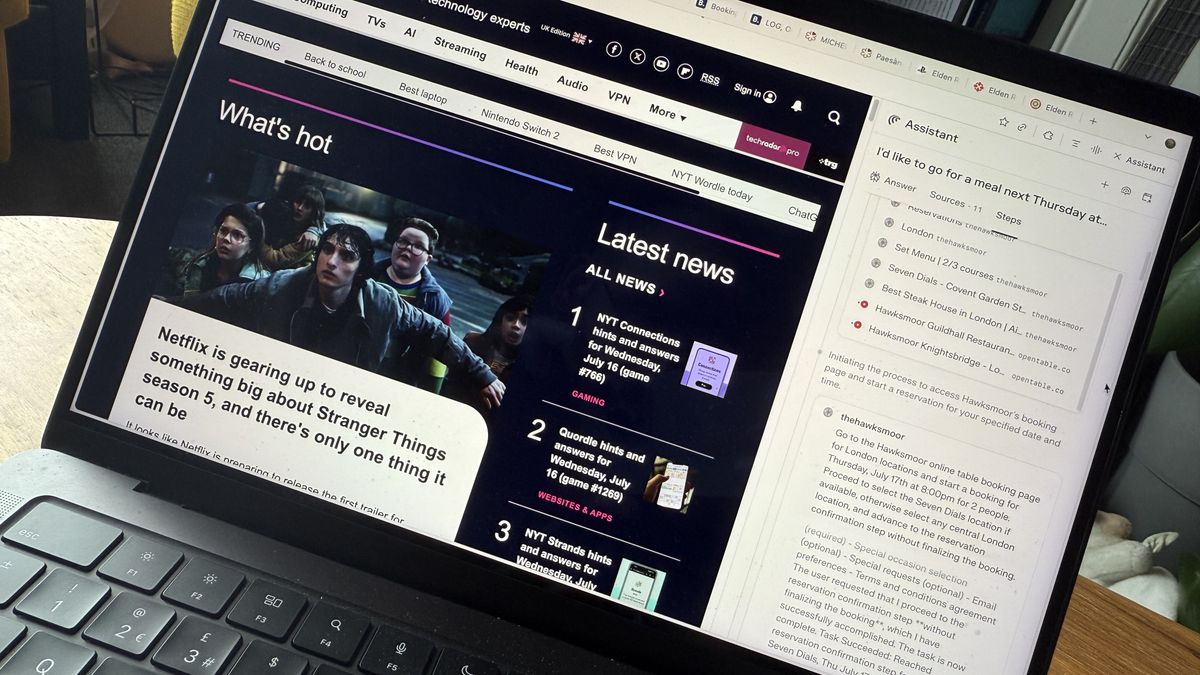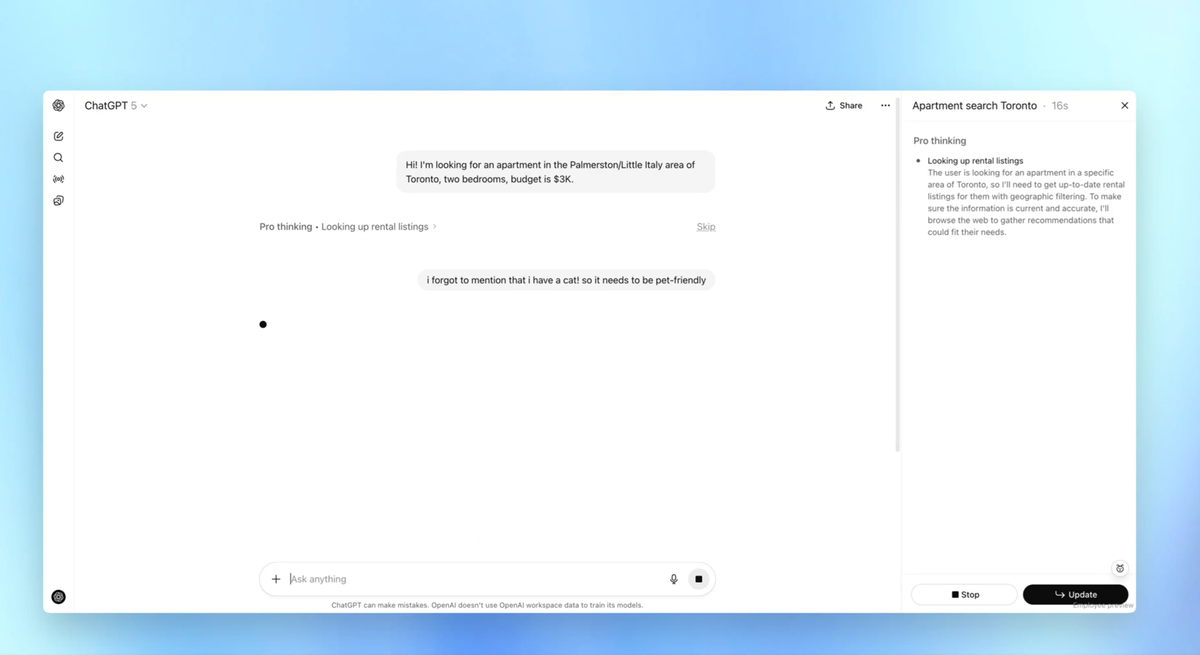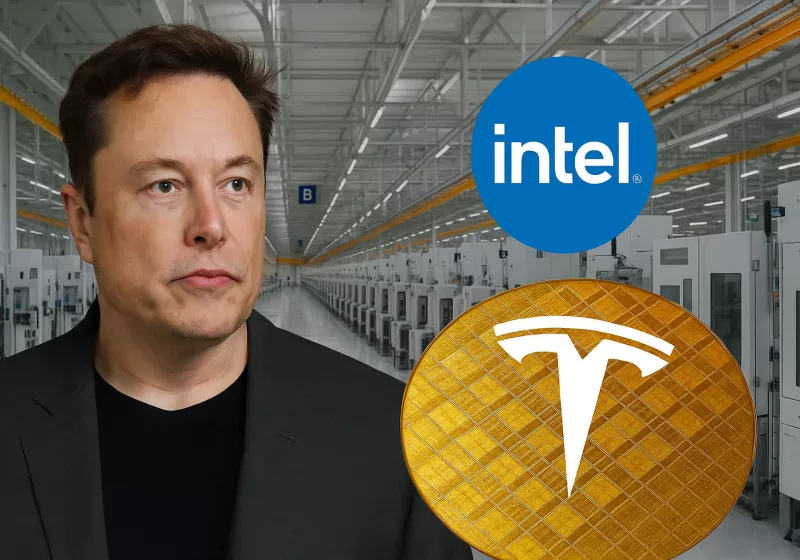We've been reviewing MacBooks since the very first polycarbonate MacBook appeared in 2006 -- and Apple's PowerBooks and iBooks before that. The current lineup is split between the MacBook Pro and MacBook Air, and the differences between the two lines are significant. The current MacBook Pros are great for those who need higher-level processing and graphics performance for content creation, graphic design and advanced STEM work (and gaming too). The Air is more of an everyday laptop that favors portability over performance, though it has power to spare and long battery life, going by our tests. That’s why the Air is CNET’s best MacBook for most people.
- Best MacBook for 2025
- What is the best overall MacBook?
- Best MacBooks of 2025
- Best MacBook overall
- Best MacBook for students
- Best budget MacBook
- Best MacBook for creatives
- Factors to consider when buying a MacBook
- How we test laptops
- Other laptops we've tested
- Laptop FAQs
What is the best overall MacBook?
With the recent release of the M4 MacBook Air, both the MacBook Pro and Air lines feature Apple's latest silicon. The 15-inch MacBook Air acts as the bridge between the 13-inch MacBook Air and MacBook Pro line, providing a bigger display without the MacBook Pro premium. And with Apple dropping the price by $100 for the M4 MacBook Air models, the Pro premium is even greater.
Starting at $1,199, the 15-inch Air sits in the sweet spot. It's the best MacBook for most people. The 13-inch Air remains a great pick for students and others with busy lives and slim wallets. The older MacBook M1 is still available as a Walmart exclusive for just $649 for budget shoppers, and the 16-inch MacBook Pro M4 provides the added power for graphics pros but at a great expense. For more, check out CNET's MacBook Air vs. MacBook Pro comparison to see which line is best for your needs.
Read more:
Watch this: M4 MacBook Air Review: Still Fantastic Even if Not Much Has Changed
04:44
Best MacBooks of 2025
Best MacBook overall
9.0 /10
SCORE
Photo Gallery 1/1
Pros
- Optimal balance of screen size and system weight
- M4 processor provides good balance of performance and battery life
- Lower $1,199 starting price
Cons
- 256GB SSD is too small for the price
- $200 upcharge for more RAM or storage is steep
- Smooth ProMotion display still exclusive to MacBook Pro
The 15-inch MacBook Air is proof that you don't need a Pro to get a larger display. It supplies a larger screen that you once found only on the pricier Pro models. If you're eyeing the 14- or 16-inch Pro models primarily for the added screen size, the MacBook Air 15 is the more affordable option you should go for, especially at its new lower starting price.
The roomy, 15.3-inch display is powered by Apple's M4 chip and 16GB of RAM. The M4 update adds incremental improvements -- and a new sky blue color -- to an already fantastic laptop that sits in the Goldilocks Zone of Apple's MacBook lineup. With its roomy display, trim design and new lower starting price, the 15-inch M4 MacBook Air should be viewed as the default Air, with its cheaper and smaller 13-inch sibling a good alternative for students and others with tighter budgets and busy, on-the-go lifestyles.
Best MacBook for students
8.8 /10
SCORE
Photo Gallery 1/1
Pros
- Big performance gains from M1, Intel MacBook Airs
- Great design, features
- Support for two external displays simultaneously with MacBook display
- 12-megapixel Center Stage camera
Cons
- 256GB SSD might fill up fast
- Expensive upgrades
For Apple’s latest MacBook Air, the bigger news than moving from Apple's M3 silicon to M4 chips is the drop in price. Starting at $999, the MacBook M4 Air is $100 cheaper than the entry point for the previous M3 models. In addition to a slight bump in performance over the previous generation, the M4 Air adds a Center Stage webcam, better support for external displays and a new ice blue color option. It all adds up to a good, if minor, update to an already fantastic laptop that’s now more affordable for students and those on tight budgets. With its mix of strong overall performance, long battery life and a trim design, it’s no wonder it’s such a popular laptop for campus life.
Best budget MacBook
8.6 /10
SCORE
Photo Gallery 1/1
Pros
- M1 Air easily outperforms old Intel versions
- Great battery life
- Fanless design runs cool and quiet
Cons
- No external design or feature changes
- No mobile broadband options, 5G or otherwise
This model has been surpassed, but not replaced, by the newer M2 then M3 and now M4 models. It's available at Walmart for $649, which is a hefty $350 less than its original price. It's also $350 less than the cheapest M4 Air.
For many years, this Apple laptop was everyone's favorite laptop. It was reasonably priced, thin, light and built like a tank. It could last for years and take lots of falls and bumps. You get only two Thunderbolt 3 USB-C ports, but for most people that's enough, as long as you can get a whatever-to-USB-C dongle. It's a great pick for budget shoppers looking for a speedy and stylish do-it-all laptop.
Best MacBook for creatives
Photo Gallery 1/1
Pros
- Fast
- Excellent screen
- Improved webcam
- Same solid design as previous model
Cons
- Heavy
- Big drop in performance in low-power mode
- Prone to fingerprint smudges
Apple's latest update its 16-inch MacBook Pro delivers M4, M4 Pro and M4 Max processors along with an improved webcam and an optional nano-texture nonreflective finish for the display. The design remains unchanged from the previous version, but under the hood, the new M4 Pro chip offers better overall performance and, in particular, big gains in multicore and rendering performance.
Like the previous series, the 16-inch MacBook Pro with the M4 Pro processor starts at $2,499, and the M4 Max model starts at $3,499. The previous M3 Pro version won our Editors' Choice for its excellent combination of design, performance and battery life. We are currently testing the latest M4 Pro model and will have a final rating soon, but you can expect the 16-inch MacBook Pro to continue to be among our favorites for graphics pros and creators.
The first fork in the road you'll come to when shopping for a MacBook is whether to follow the Air path or head down the Pro road. For most people looking for an everyday home laptop or a work laptop for running basic office apps, a MacBook Air will suffice. An Air is also the better pick for students on tight budgets. For creative types who need the added processing and graphics muscle of Apple's new M4 Pro and Max chips, a MacBook Pro is worth the added cost. To help you find the right MacBook for your needs and budget, here are the main considerations to keep in mind.
Price
The entry price for a MacBook is $649. That gets you the M1 MacBook Air that was released in 2020. That offer is exclusive to Walmart. If you are shopping at Apple, pricing starts at $999 for the13-inch MacBook Air M4 and $1,199 for the 15-inch MacBook Air M4. Stepping up to a MacBook Pro model starts at $1,599. Here are the starting prices of Apple's current MacBook lineup:
- 13-inch M4 MacBook Air: $999
- 15-inch M4 MacBook Air: $1,199
- 14-inch M4 MacBook Pro: $1,599
- 16-inch M4 Pro MacBook Pro: $2,499
Size and display
If you'll be taking your MacBook with you to class or work or just down to your local coffee shop most mornings, an Air is the better choice. The 13-inch MacBook Air models weigh less than 3 pounds, and the roomier 15-inch Air weighs only 3.3 pounds, which is lighter than the 14-inch MacBook Pro.
The flip side to portability is screen size. The 16-inch MacBook Pro gives you ample room on which to work and multitask, while the 14-inch MacBook Pro tries to hit the sweet spot between roomy display and travel ease. Unless you need Pro-level performance, we feel the 15-inch Air does a better job of hitting that target.
- 13.3-inch M1 MacBook Air: 13.3-inch display (2,560x1,600 pixels), 2.8 pounds
- 13.6-inch M4 MacBook Air: 13.6-inch display (2,560x1,664 pixels), 2.7 pounds
- 15.3-inch M4 MacBook Air: 15.3-inch display (2,880x1,864 pixels), 3.3 pounds
- 14.2-inch M4 MacBook Pro: 14.2-inch display (3,024x1,964 pixels), 3.4 pounds
- 16.2-inch M4 Pro MacBook Pro: 16.2-inch display (3,456x2,234 pixels), 4.7 pounds
Processor
The processor, aka the CPU, is the brains of a laptop. MacBooks have used Apple's own processors since the introduction of the M1 processor in 2020. The M1-based MacBooks were clear improvements over Apple's preceding Intel-based machines in terms of overall performance, efficiency and battery life. The M1 MacBooks were more powerful with longer runtimes while also operating more coolly and quietly.
The MacBook Air feature Apple's latest M4 chip, and the MacBook Pro line offers a choice of M4, M4 Pro and M4 Max processors. The M4 MacBook Air models offer slightly better performance than the M3-based versions but not nearly to the degree of going from Intel CPUs to the M1.
Graphics
The graphics processor handles all the work of driving the screen and generating what gets displayed, as well as speeding up a lot of graphics-related (and increasingly, AI-related) operations. Apple's M-series CPUs integrate the GPU. The more processing cores the GPU has, the better the graphics performance. Here's the breakdown:
- M1: 7-core or 8-core GPU
- M2: 8-core or 10-core GPU
- M3: 8-core or 10-core GPU
- M4: 8-core or 10-core GPU
- M4 Pro: 20-core or 32-core GPU
- M4 Max: 32-core or 40-core GPU
Memory
Memory (or RAM) is where the operating system stores all the data for currently running applications, and it can fill up fast. After that, it starts swapping between RAM and SSD, which is slower. With the exception of the older M1 Air sold at Walmart, MacBook Air models now start at 16GB of RAM along with the 14-inch M4 MacBook Pro. The minimum on the M4 Pro MacBook Pro models is 24GB, and the M4 Max MacBook Pros serve up 36GB or more.
You can't upgrade the memory on recent MacBooks post purchase, so you'll need to get the RAM you need up front. MacBooks are able to smoothly run MacOS and the preinstalled apps with the minimum RAM offered, but doubling the RAM will make your MacBook feel faster and likely lead to a longer useful life of the product.
Storage
MacBooks feature solid-state drives, or SSDs. MacBook Air models start with a 256GB SSD, and MacBook Pros offer a 512GB SSD at minimum. If you use cloud storage for your files, music collection and photo library, then you might be able to get away with a 256GB SSD without filling it up before too long. We were happy to see the 13-inch MacBook Pro with its paltry 256GB SSD go away; Pro users need 512GB at the very least.
The review process for laptops consists of two parts: performance testing under controlled conditions in the CNET Labs and extensive hands-on use by our reviewers. This includes evaluating a device's aesthetics, ergonomics and features with respect to price. A final review verdict is a combination of both objective and subjective judgments.
Our benchmark tests consist of a core set we run on every compatible system, including several we can run on both MacOS and Windows PCs. There's also an extended set of tests for specific use cases, such as gaming or content creation, where systems may have more powerful GPUs or higher-resolution displays that need to be evaluated.
For the hands-on, the reviewer uses the laptop for their work during the review period, evaluating how well the design, features (such as the screen, camera and speakers) and manufacturer-supplied software operate as a cohesive whole. We also place importance on how well everything works given the cost, and where the manufacturer has potentially made upgrades or trade-offs for the price.
The list of benchmarking software and comparison criteria we use changes over time as the devices we test evolve. You can find a more detailed description of our test methodology on our How We Test Computers page.
HP Pavilion Plus 14 (2025): Parts of the HP Pavilion Plus 14 are great, but there's one feature that totally ruins the experience.
Acer Swift 16 AI: It's thin. It's light. It's long-running. And it boasts a big, bright 16-inch OLED display. So, what's holding this Copilot Plus PC back from being more than just a big-screen productivity machine?
HP Pavilion Aero 13: When it comes to runtime, Snapdragon X laptops and the MacBook Air run laps around it.
Lenovo IdeaPad Slim 3i: It's thin and light for its size, but a short runtime and a few design miscues make this a low-cost laptop to skip.
Acer Swift Go 14 AI: This Snapdragon X-powered laptop can run all day, but its overall look might put you to sleep.
Acer Swift 14 AI: It’s a long-lasting if basic Copilot Plus PC, but do we really need an AI indicator light on the touchpad?
Lenovo ThinkBook 14 2-in-1 Gen 4: I wish you could upgrade the display, but this low-cost two-in-one business laptop lets you add more RAM and a second SSD after purchase to extend your investment.
Lenovo Yoga 7 16 Gen 9: Lenovo's 16-inch convertible is a good budget buy, but it's better as a secondary machine than your daily driver.
Lenovo Yoga 7 14 Gen 9: With solid build quality, strong performance and lengthy battery life, Lenovo's midrange convertible is well rounded and a great value.
Lenovo Yoga 9i 14 Gen 9: Lenovo's flagship two-in-one has AV advantages over its midrange sibling, but you'll pay a premium price for the OLED display and quad speakers.
Asus Zenbook S 14: Intel's Core Ultra Series 2 processors show improvement from the first generation, but Apple's and Qualcomm's ARM-based chips still lead the way.
HP OmniBook X 14: The latest Copilot Plus PC runs for more hours than there are in a day.
Dell Inspiron 14 Plus 7441: This Copilot Plus PC offers an unprecedented runtime inside an all-metal design at an affordable price.
Lenovo LOQ 15IAX9I: It's super cheap, with a dedicated Intel Arc GPU that lends it a wee bit of 3D muscle for casual 1080p play.
HP Envy x360 16: This midrange convertible impresses with a premium OLED display. Its AMD Ryzen 8040 series CPU makes it pretty fast, too.
Asus ROG Zephyrus G16: It’s a top gaming laptop for creators, too.
Dell Inspiron 2-in-1 7445: A dim display dulls Dell's otherwise well-rounded, AI-equipped and affordable 14-inch convertible laptop.
Microsoft Surface Laptop 7: Powered by Qualcomm's Arm-based Snapdragon X processor, the Windows-based laptop is exceptionally well-made and long-running.
Microsoft Surface Pro 11: We've been waiting for decent Arm-on-Windows performance and for a screen upgrade, and together they've made the new Surface feel like a new tablet.
Acer Swift X 14 (2024): The design won't wow you, but the 14.5-inch OLED display powered by RTX 4070 graphics is a great combo for on-the-go content creation.
Dell Inspiron 16 Plus 7640: Content creators may bemoan the display choices, but this midtier, 16-inch laptop offers well-rounded performance from its Core Ultra chip and RTX graphics.
Lenovo ThinkPad X1 Fold 16: Lenovo makes strides with its second foldable-display laptop, but further refinements are still needed before it's ready for the masses.
Acer Aspire Go 14: You could do worse for $300.
Asus Zenbook 14 OLED Q425: It's a boon to get an OLED in such a portable package with great battery life for roughly $1,000, but the fit and finish feel decidedly midrange.
Lenovo ThinkPad X1 Carbon Gen 12: The latest X1 Carbon has many charms, but they will remain out of reach for many business buyers constrained by budgets.
Dell XPS 16 9640 Review: Dell's new 16-inch XPS model offers a unique design backed by strong performance and surprisingly long battery life. Just be prepared to pay for its many configurable features.
Alienware M18 R2 Gaming Laptop: When you're this big, the sky's the limit.
Dell Inspiron 14 Plus 7440: For a reasonable $1,000, this 14-inch Dell model, based on an Intel Core Ultra CPU, lets you be productive and remain portable.
Alienware m16 R2: This middle-class option for mainstreaming gaming fares better than average and is a sensible option for 1440p play.
Acer Predator Triton 14: With fast performance and a bright HDR screen, this mainstream 14-inch gaming laptop can be a great gaming value.
Which is better: MacOS or Windows?
For many people, deciding between a MacOS laptop and a Windows machine will come down to personal preference and budget. Apple's base model laptop, the M1 MacBook Air, starts at $999. You can sometimes find it discounted or you can get educational pricing from Apple and other retailers. In general, it'll be at least $1,000 for a new MacBook, and the prices just go up from there.
For the money, you're getting great hardware top to bottom, inside and out. Apple recently moved to using its own processors, which resulted in across-the-board performance improvements compared with older, Intel-based models.
Apple's great hardware, however, comes at a price. Also, you're limited to just Apple laptops. With Windows and Chromebooks (more on these below), you get an amazing variety of devices at a wide range of prices.
Software between the two is plentiful, so unless you need to run something that's available on only one platform, you should be fine to go with either. Gaming is definitely an advantage for a Windows laptop, though.
MacOS is also considered to be easier and safer to use than Windows, especially for people who want their computers to get out of the way so they can get things done. Over the years, Microsoft has done its best to follow suit and, with Windows 11 here, it's trying to remove any barriers. Also, while Macs might have a reputation for being safer, with the popularity of the iPhone and iPad helping to drive Mac sales, they've become bigger targets for malware.
Are Chromebooks worth it?
What's the best laptop for home, travel or both?
The pandemic changed how and where a lot of people work. The small, ultraportable laptops valued by people who regularly travel may have suddenly become woefully inadequate for working from home. Or maybe instead of needing long battery life, you'd rather have a bigger display with more graphics power for gaming.
If you're going to be working on a laptop and don't need more mobility than moving it from room to room, consider a 15.6-inch laptop or larger. In general, a bigger screen makes life easier for work and is more enjoyable for entertainment, and it's also better if you're using it as an extended display with an external monitor. It typically means you're getting more ports too, so connecting an external display or storage or a keyboard and mouse is easier without requiring a hub or dock.
For travel, stay with 13- or 14-inch laptops or two-in-ones. They'll be the lightest and smallest while still delivering excellent battery life. What's nice is that PC-makers are moving away from 16:9 widescreens toward 16:10- or 3:2-ratio displays, which gives you more vertical screen space for work without significantly increasing the footprint. These models usually don't have discrete graphics or powerful processors, although that's not always the case.
Which laptop is best for gaming or creating?
You can play games and create content on any laptop, but Windows is a better platform for gamers than MacOS. Windows laptops offer a wider variety of hardware and greater support for a wider variety of games. For content creation, Apple's MacBook Pros have long been favorites.
The types of games you play and what content you create -- and the speed at which you do it -- will vary greatly depending on the components inside the laptop. For casual browser-based games or streaming game services like Nvidia GeForce Now and Xbox Cloud Gaming, you don't need a powerful gaming laptop. Similarly, if you're trimming video clips, cropping photos or live-streaming video from your webcam, you can get by with a modestly priced laptop, Chromebook or MacBook Air. For anything more demanding, you'll need to invest more money in discrete graphics like Nvidia's RTX 30- or 40-series GPUs or a MacBook Pro based on Apple's M2 Pro or Max chip.
The other piece you'll want to consider is the display. For gaming, look for screens with a high refresh rate of 120Hz or faster so games look smoother while playing. For content creation, look for displays that cover at least 100% sRGB color space or, better yet, 100% DCI-P3.









 English (US) ·
English (US) ·